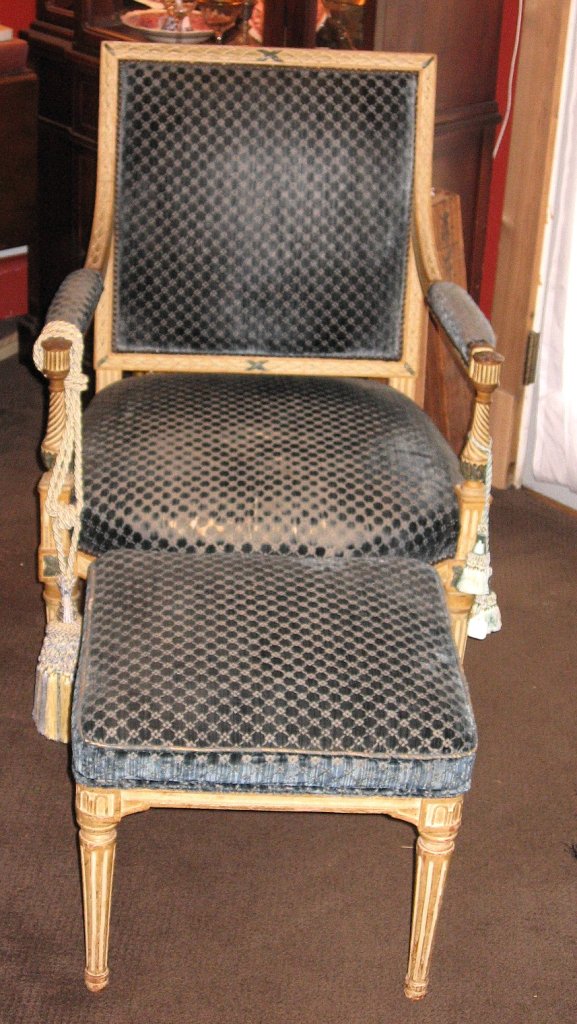Anyone looking to change up their interior décor these days would do well to look back before going forward.
Paging through a recent issue of Interior Design magazine, other than the high-tech stuff and brushed chrome kitchens, there are some photos and ads that look like those from an issue of fifty or sixty years ago.
In fashion and design, the period from the 1930s through the 1960s is known as Mid-Century style. From Deco to Do-wop, it’s been having a comeback lately, especially the post-war, celebratory “high-style” from 1945 to 1965.
Not since the Victorian Age had there been a time of such creative output and high consumption of goods. Now that we have had time to sift through it all, we are realizing just how perfectly it speaks to what we need in our lives today.
The best Mid-Century style is bright, colorful and clean-lined, intelligent and interesting, uplifting, forward-looking and optimistic. You can also find it in the antique shops. Anyone who has ever thought of antiques stodgy, dusty and stuffy hasn’t been paying attention lately.
Just skimming the surface with the kind of items you’re likely to see in local shops, here are some things to start noticing:
Furniture. This was an age of the designer, and some of those designer-modern pieces on the market today can be quite pricey investments. Period department-store modern furniture, however, is still available and very affordable, especially at auction. It varies in quality, so inspect everything.
If you lived near any major city, especially on the east coast, you got French, usually a neo-Classical style like Empire or Louis XVI. Only the very wealthy could afford to buy the real stuff from cash-starved France. So decorators had handcrafted copies made directly from originals. This stuff is called “Decorator French,” and it’s one of the best buys on the market. A good buy, too, is the creative, French-inspired “Moderne” furniture.
Glass. Murano glass carried over its popularity from the 1930s with colorful “ribbon” glass and the thick, sculpted “biomorphic” (life-shape) style. By contrast there was the pure form and crystal clarity of Scandinavian art glass and American Steuben Another American company, Blenko, produced affordable high-style art glass designed by Winslow Anderson.
Ceramics: A sale of Russell Wright dishes nearly caused a riot at Gimbles in the late 1940s. LLadro figurines became a genuine craze in the early-mid-1950s. The designers of the California potteries of the period produced stunningly modern designs in colorful glazes. There are some big names – Eva Zeizel, Sacha Brastoff, Glidden (Alfred University), and others, but even the mid-line companies, like hull, Abingdon, McCoy and Stangl produced some very intelligent designs.
Jewelry: Probably nothing else says “high style” like the jewelry of the Mid-Century. With the price of gold regulated by law, it was liberally used and creatively fashioned. Gems and stones, un-radiated or otherwise treated for color, were of the highest quality. Unlike today, you didn’t have to go to a high-end retailer to find this level quality. Also, notice the other accessories of the period – bags, hats, compacts, ect.
From 1945 to 1965, Americans were sitting on top of the world. If we could stop our bickering for a minute and take a good, hard look, we’d realize that we still are. The Mid-Century has left us a legacy. It’s time to find it and bring it home again.
Arthur Schwerdt, a certified appraiser, is the author of “The Antique Story Book: Finding the Real Value of Old Things.”
And co-owner of The August Farmhouse Antiques on Route 9 in Swainton. Send your comments, questions and appraisal requests to aschwerdt@cmcherald.com.
West Wildwood – I see Sweden has cancelled the proposed windmills off their shores. This follows the overwhelming majority of fellow West Wildwood residents who have denounced the plan to place windmills along the…








